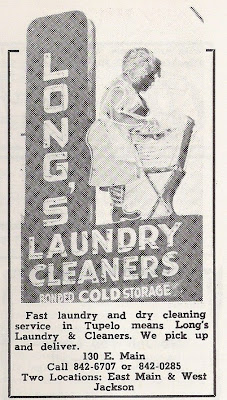 I remember like it was yesterday standing in line in the lunchroom at Joyner. While most of my classmates had a lunch ticket in their hands, I always had a quarter. My mother never wanted to pay for lunches in advance on Monday morning. Mrs. Tucker, the lunchroom manager, stood halfway down the north wall, waiting to take our tickets – or quarters. I always asked Mrs. Tucker what we were having, and she took great pleasure in describing the day’s fare. One day she told me: “It don’t look good, but it eats good.” I’m sure it didn’t look good. Most days it didn’t.
I remember like it was yesterday standing in line in the lunchroom at Joyner. While most of my classmates had a lunch ticket in their hands, I always had a quarter. My mother never wanted to pay for lunches in advance on Monday morning. Mrs. Tucker, the lunchroom manager, stood halfway down the north wall, waiting to take our tickets – or quarters. I always asked Mrs. Tucker what we were having, and she took great pleasure in describing the day’s fare. One day she told me: “It don’t look good, but it eats good.” I’m sure it didn’t look good. Most days it didn’t.After passing Mrs. Tucker, we picked up a tray and moved to the milk cooler where a student cafeteria helper put a napkin, a straw, and a red, half-pint carton of Barber’s milk on our tray. (You could only get chocolate milk at morning recess.) The line then crawled in the direction of the serving windows where an adult cafeteria worker put a plate of food on our trays, and then we disbursed in the direction of the long rows of lunch tables. There was some strategy involved in getting to sit by your friends. It had to do with how you lined up, how fast you walked after you got your food, and which side of the long tables you went down. If you weren’t careful, you might have to sit next to girls. Of course you might try to work it out for a friend to save you a seat, but seat-saving was not really enforceable.
I remember we always had fish sticks on Friday, but other than that there was no discernable pattern to what we ate. Spaghetti days and hamburger days were good days, but they seemed few and far between. A lot of days we had an unrecognizable and therefore unnamed entrée we referred to as “square meat.” With square meat we might have English peas and mashed potatoes or rice. I recall how the peas were much larger and paler than the ones my mother served at home, so I never could eat them. Some of my classmates, however, enjoyed mixing them with the mashed potatoes, but I found that a disgusting way to ruin good potatoes. It is the rice I remember best. It was served with an ice cream scoop, and it was so gummy it retained the shape of the scoop, an unappetizing little mound of gelatinous goop.
“Hey. Are you going to eat your rice? I’ll trade you my square meat for your rice.”
Such was the trading that went on back and forth along and across the lunch tables. The kids that traded for rice were the ones who had the curious practice of putting spoonfuls of sugar on the rice. Since most of us did not subscribe to that practice, the rice-eaters could end up with a large mound of the stuff on their plates. And they usually didn’t even have to give away their square meat. The kids that really made out were the ones who could eat turnip greens. They could always count on having all they wanted.
Because I never did so, the kids I always envied were the ones who brought their lunch, sometimes in a paper bag, but most often in a lunch box. Lunch boxes were a part of the appeal of bringing your own lunch. The little tin boxes with a clasp and handle on the business side of the box were decorated with little murals to gladden the young heart. Besides the Lone Ranger box pictured above, they might have a Roy Rogers or a Yogi Bear motif that carried over to the little thermos clamped to the inside wall of the box. Of course the real appeal of the lunch box was the non-regulation food they contained – a peanut butter and jelly sandwich, some Cheetos, and Hostess Cupcakes or Twinkies. If that weren’t enough, the lunch box set nearly incited a riot by pouring iced tea or Kool-Aid from the thermos into the cup that was also the lid to the thermos. A kid that was willing to give up one of his cupcakes could get a whole plate full of sugar-sprinkled rice.
The final lunch alternative for the kids who lived closest to the school was to go home for lunch. Even though I lived close enough to go home, I usually didn’t. After all, the time it took to get home and back reduced or eliminated your playground time. I do remember going home several times in October 1959 when my White Sox were in the World Series. I was a big fan of Nellie Fox and Luis Aparicio, so I ran all the way home and ate lunch in front of the TV, then ran back to the school just before the bell called everyone in from the playground.









